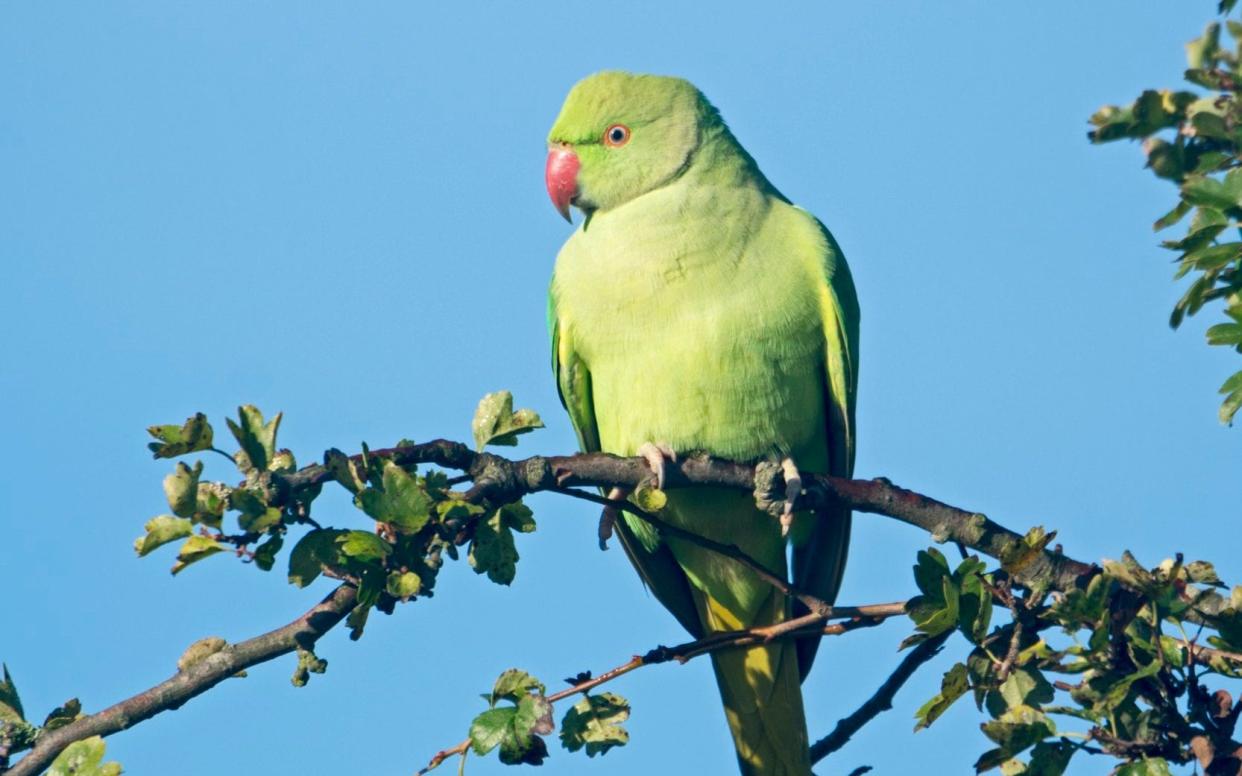London's parakeet invasion sparked by panicked owners not Jimi Hendrix

The urban myth that Britain’s problematic ring-necked parakeet population flourished after Jimi Hendrix released birds in Carnaby Street in the 1960s, has finally been debunked by scientists.
Likewise the theory that the birds thrived after being set free from the set of The African Queen which was filmed in Worton Hall Studios in West London in 1951 has also been firmly dismissed.
Using geographic profiling techniques originally developed to hunt criminals by looking for hot spots of activity, scientists from Queen Mary University of London, University College London and Goldsmiths, have concluded that there is no ‘ground zero’.
Instead, the burgeoning flocks appear to have grown from a random string of releases over the past century.
Many birds were probably intentionally set free by panicked owners following a number of health scares where people died from parrot diseases between 1929 and 1952, the research suggests.

And the great storm of 1987 is also thought to have damaged averies across the south east, releasing captive birds and causing a major upswell in sightings by the beginning of the 1990s.
Lead author Dr Steve Le Comber, a specialist in spatial patterns in biology, has died since the article submitted the publication.
But speaking before his death about the research which is published today, Dr Le Comber said: “The fun legends relating to the origins of the UK's parakeets are probably not going to go away any time soon.
“However, our research only found evidence to support the belief of most ornithologists: the spread of parakeets in the UK is likely a consequence of repeated releases and introductions, and nothing to do with publicity stunts by musicians or movie stars.”

Escaped parakeets have been spotted in Britain since the 19th century with the earliest recorded sightings in Norfolk in 1855, Dulwich in 1893 and Brixton in 1894.
However populations began to increase rapidly after the 1950s and by the 1990s they were frequently spotted in the capital.
The bird is native to southern India, but there are now around 8,600 breeding pairs of ring-necked parakeets living throughout England, with the biggest population in west London.
They have also been spotted on the borders of Wales and Scotland and are expected to eventually spread throughout the British mainland.
To find out where the birds were living over the past century, researchers carried out an extensive search of archived newspaper articles between 1804 and 2008, and plotted the sightings on a map to see if they could find a point of origin.
Previously Dr Le Comber used the same technique in a variety of ways which include mapping malaria outbreaks, Banksy paintings and Second World War bombs.
As well as the legends regarding Hendrix and The African Queen, suggestions had been made that the birds absconded from Syon Park in west London after debris from a passing plane damaged an aviary in the 1970s.
But just like Carnaby Street, and Worton Hall Studios, the area around Syon Park did not show up prominently in the records.
However they did find a slew of newspaper reports with headlines such as ‘Risk Run by Keeping Parrots’ and ‘Infected by Parrot: theory of a doctor’s fatal illness’ around the time of the spurt in numbers, following a psittacosis outbreak in 1929 which caused global concern.
Bird imports were banned by the Ministry of Health for 20 years after the scare.
Study co-author Sarah Elizabeth Cox, postgraduate history student at Goldsmiths, said: “Scary health stories often prompt a strong public reaction - look at the late-1990s autism/MMR panic.
“It is easy to imagine the headlines of 1952, such as 'stop imports of danger parrots' leading to a swift release of pets.
“If you were told you were at risk being near one, it would be much easier to let it out the window than to destroy it.”
The research was published in the Journal of Zoology.

 Yahoo News
Yahoo News 
